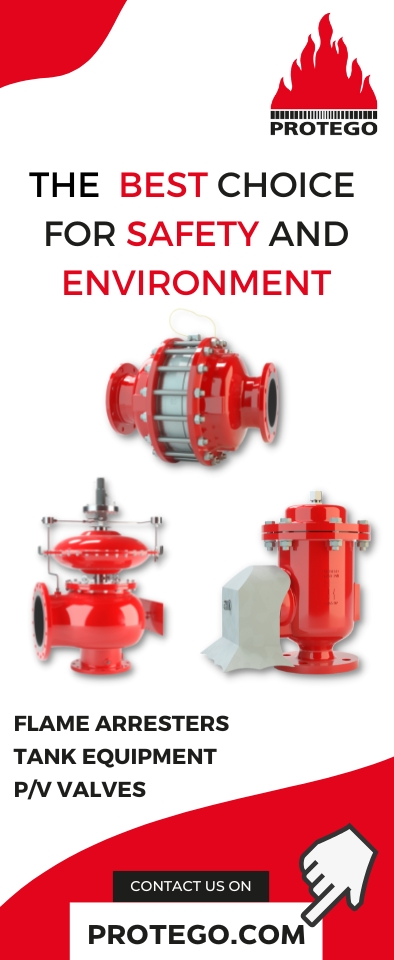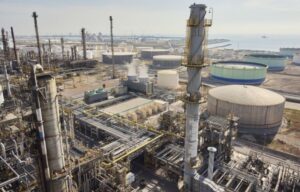Ingrid Pederson looks at the drawbacks of time-based inspections and the improvements gained by switching to risk-based inspections
Political obstinacy frequently cancels new pipeline projects while the energy demand continues to grow. This dichotomy is requiring existing infrastructure to be maintained longer and pushed harder. At the same time oil price crashes and a global pandemic have squeezed maintenance budgets.
The conservatism built into American Petroleum Institute (API) Standard 653: Tank Inspection, Repair, Alteration and Reconstruction, can result in some aboveground storage tanks (AST) taken out of service more frequently than necessary while following a time-based inspection schedule. The Pipeline and Hazardous Materials Safety Administration (PHMSA) has incorporated by reference the 2008 edition of API 653 excluding section 6.4.3, thus disallowing risk-based inspections (RBIs) for ASTs for any owner/operator that is federally regulated in the US.
TANK INTEGRITY MANAGEMENT PROGRAMMES
The purpose of a tank integrity management programme is to maintain the condition of the tank so that it remains operable. Ensuring safe operation also minimises unplanned outages and maximises the value gained from the asset. Tank bottom evaluation cannot typically be assessed while the tank is in service, thus this tends to be the driving factor in internal inspections, also known as out-of-service (OOS) inspections.
One method of improving the efficiency of an integrity management plan is to incorporate risk in the evaluation of a tank’s inspection interval. An RBI approach can be used to compare the risk trend of a tank against a risk target to determine whether an internal inspection is required earlier or later than the time-based approach currently allowed by the Code of Federal Regulations (CFR) for all Department of Transportation (DOT) regulated ASTs. Risk can be leveraged directly as part of a risk-based inspection programme with discrete risk targets or limits. Alternatively, it can be utilised as one of multiple criteria in a risk-informed inspection program which incorporates the risk while allowing for other inputs.
An example of what RBIs for ASTs might look like can be taken from API RP 581, Risk-based Inspection Methodology. This RBI modelling provides semi-quantitative calculation methods to determine inspection plans. API RP 581 combines probability of failure (PoF) model and the consequence of failure (CoF) combined to provide a risk ranking. Inputs into the PoF model include construction data, basic operating data and inspection results. PoF is typically flat for a leak failure mode until minimum allowable remaining thickness (MRT) is reached, at which point it becomes exponential. Both MRT and the repair threshold are inputs into the 581 model. The repair threshold is dependent on what the owner/operator sets their reinspection interval at within the maximum allowed by API 653.
REASONS FOR NON-INCLUSION
PHMSA declined to incorporate the latest edition of API 653 in their 2015 Federal Register ruling1. Rather this ruling retains API S653–2001 (3rd edition, December 2001), with the exception of section 6.4.3, ‘Alternative Internal Inspection Interval.’ PHMSA stated they have excluded section 6.4.3 because of concerns that the RBI procedures described in section 6.4.3 of the standard do not require adequate or consistent assessment factors for establishing an alternate internal inspection interval.
Operators utilising an RBI program for their ASTs only had two years to comply with the 2015 ruling. This change caught many operators by surprise and created a significant challenge to schedule internal inspections in such a short time frame. An OOS maintenance project can easily take three to six months to execute on large tanks as well as have a significant impact on operability of the pipeline(s) due to the reduced storage capacity. OOS maintenance also requires extensive safety measures as workers are sent into confined spaces. This ban on risk assessment is specific to ASTs abiding by API 653. PHMSA requires risk assessment in high consequence areas. CFR § 195.452 ‘Pipeline integrity management in high consequence areas’ states that an operator must do risk analysis to evaluate likelihood of a pipeline release and must take measures to prevent and mitigate consequences of a pipeline failure.’2
The intent of DOT incorporation of industry standards as per The National Technology Transfer and Advancement Act of 19953 directs Federal Agencies to use voluntary consensus standards and design specifications developed by voluntary consensus standards bodies rather than government-developed technical standards. This should oblige regulators to adopt the latest editions of these standards. API technical standard committees are continuously reviewing and revising standards to make them better, as new technology is developed, lessons learned, clarifications requested, etc. The Canadian Standard Association’s Z662: Oil & Gas Pipeline Systems standard doesn’t necessarily keep up with the latest editions of API 650, API 653, etc. However, it includes a note in Section 2.1: ‘This Standard refers to the following publications, and where such reference is made, it shall be to the edition listed below, unless the user finds it more appropriate to use newer or amended editions of such publications.’
UTILISING RBIS
How could owner/operators regulated by the DOT and interested in optimising tank maintenance utilise risk-based inspection techniques? Industry advocacy needs to have clearly defined objectives, demands and targets (e.g., who has the power to make the change). Advocacy efforts must be both logical and flexible to achieve the desired result. Five components to include in an advocacy framework:
- Knowledge transfer, such as conferences or training.
- Industry benchmarking – activities to support benchmarking with industry peers to set targets and/or compare against, (e.g., industry metrics, as low as reasonably practicable (ALARP) levels, recommended practices, standards and guidance, etc.).
- Best practices including activities to integrate the reliability framework within internal management systems.
- Regulations and standards: This could include challenging regulators to follow the latest editions of major industry standards, formal requests to change regulations, influencing and improving codes and standards and awareness of applicable codes and standards.
- Internal metrics to drive corporate behaviours and culture (e.g., industry metrics, performance targets, ALARP levels, other benchmarking inputs).
Regardless of special permit submissions, petitioning for the latest standards to be adopted, or other advocacy efforts, tank inspection interval setting needs to improve beyond the simplistic time-based methodology used today. With the extreme difficulty of building new pipelines in North America existing infrastructure needs to be managed more efficiently than ever, optimising inspections while reducing risk of incidents. A risk-based programme is needed to achieve both these goals.
References
- Pipeline Safety: Periodic Updates of Regulatory References to Technical Standards and Miscellaneous Amendments, May 2015, https://www.federalregister.gov/documents/2015/01/05/2014-30336/pipeline-safety-periodic-updates-of-regulatory-references-to-technical-standards-and-miscellaneous
- CFR § 195.452 ‘Pipeline integrity management in high consequence areas’ states that an operator must do risk analysis to evaluate likelihood of a pipeline release and must take measures to prevent and mitigate consequences of a pipeline failure’, December 2000, https://www.ecfr.gov/current/title-49/subtitle-B/chapter-I/subchapter-D/part-195#195.452
- The National Technology Transfer and Advancement Act of 1995, Pub. L. 104-113, March 1996, https://www.nist.gov/standardsgov/national-technology-transfer-and-advancement-act-1995
For more information:
This article was written by Ingrid Pederson P. Eng, engineering specialist, facilities integrity storage at Enbridge.
Disclaimer: Any information or data pertaining to Enbridge Employee Services Canada Inc., or its affiliates, contained in this article was provided to the authors with the express permission of Enbridge Employee Services Canada Inc, or its affiliates. However, this article is the work and opinion of the author and is not to be interpreted as Enbridge Employee Services Canada Inc, or its affiliates’, position or procedure regarding matters referred to in this article. Enbridge Employee Services Canada Inc and its affiliates and their respective employees, officers, director and agents shall not be liable for any claims for loss, damage or costs, of any kind whatsoever, arising from the errors, inaccuracies or incompleteness of the information and data contained in this paper or for any loss, damage or costs that may arise from the use or interpretation of this article.











